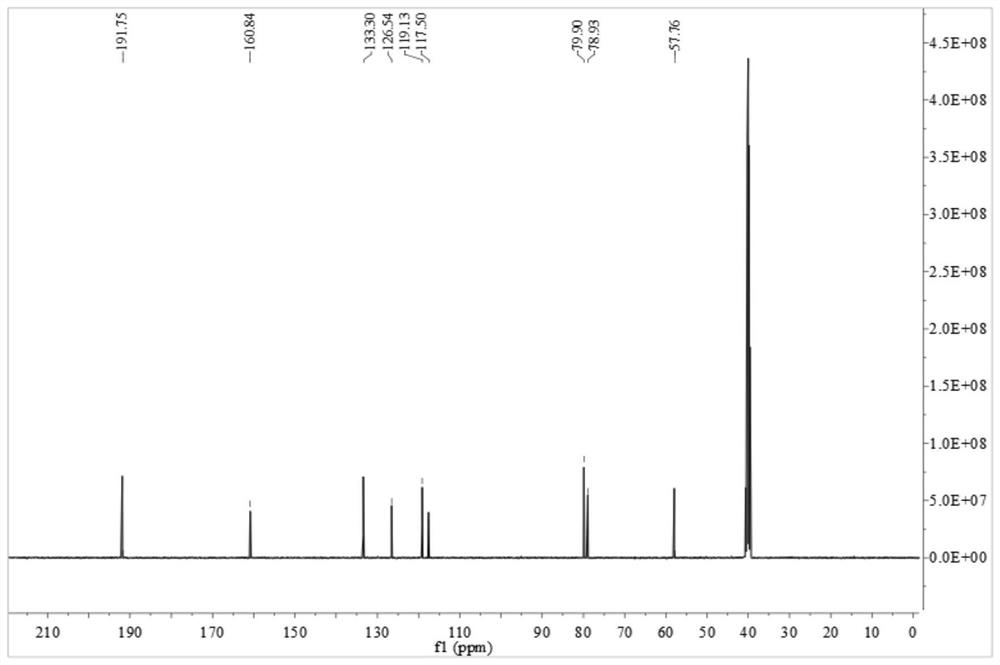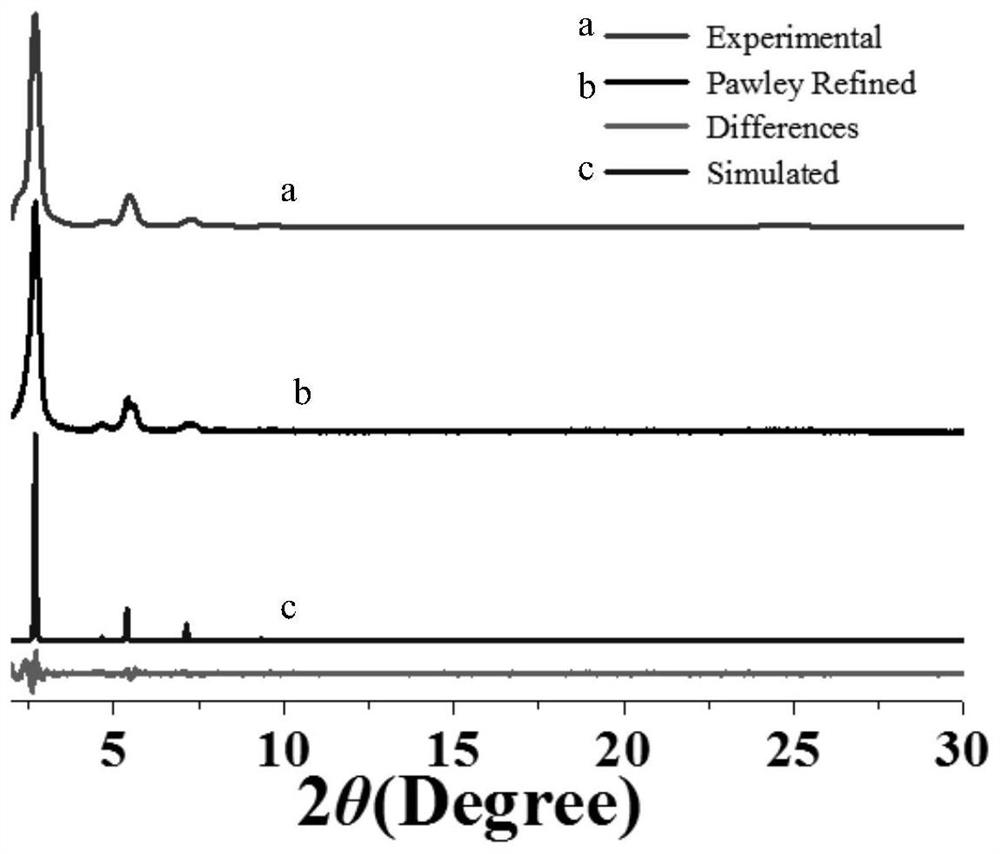A compound and its covalent organic framework structure and application
A covalent organic framework and compound technology, applied in the field of covalent organic framework materials, can solve the problems of poor chemical stability and thermal stability of materials, difficulty in maintaining the original structure, cumbersome preparation methods, etc., and achieve high chemical stability and thermal stability The effect of safety, environmental protection and simple preparation method
- Summary
- Abstract
- Description
- Claims
- Application Information
AI Technical Summary
Problems solved by technology
Method used
Image
Examples
Embodiment 1
[0053] Example 1 Synthesis of compound 2,6-bis(2-propynyloxy)naphthalene-1,5-dicarbaldehyde
[0054] 2,6-Dihydroxynaphthalene-1,5-dicarbaldehyde (0.58 g, 2.7 mmol) and K 2 CO 3 (1.87 g, 13.5 mmol) in THF (60 mL) at reflux for 30 minutes. After cooling to room temperature, 3-bromopropyne (1.3 mL) was added and the reaction mixture was heated to reflux for 3 days. The reaction mixture was cooled to room temperature, then water (60 mL) was added, extracted with chloroform (3 x 75 mL), washed with 5% sodium hydroxide solution (2 x 75 mL), washed with brine (75 mL), dried over sodium sulfate, Filtration followed by removal of the solvent under reduced pressure and purification of the crude product by column chromatography (dichloromethane / petroleum ether 1:1) afforded 2,6-bis(2-propynyloxy)naphthalene-1,5 - Diformaldehyde is a pale yellow powder (410 mg, 51%). 1 H-NMR (DMSO-d6, 400MHZ): δ=10.74 (s, 2H), 9.36 (d, 2H), 7.76 (d, 2H), 5.14 (d, 4H), 3.70 (t, 2H). 13 C-NMR (DMSO-d...
Embodiment 2
[0058] A 10 mL Pyrex glass tube was charged with 1,3,5-tris(4-aminophenyl)benzene (TPBA) (28.1 mg, 0.08 mmol), 2,6-bis(2-propynyloxy)naphthalene-1 , 5-dicarbaldehyde (35.5 mg, 0.12 mmol) and 1 mL of ethanol. The resulting suspension was sonicated for 30 seconds at room temperature, then 200 μL of 6M acetic acid was added. Degassed, freeze-thawed for three cycles, sealed, and heated at 120°C for 3 days. The reaction was completed, centrifuged to obtain a yellow-brown precipitate, the precipitate was washed three times with tetrahydrofuran, and then fully washed with a Soxhlet extractor (methanol, acetone, tetrahydrofuran), and vacuum-dried at 120 degrees Celsius for 12 hours to obtain 34 mg based on 2,6-bis(2- The covalent organic framework material of propynyloxy)naphthalene-1,5-dicarbaldehyde structural unit (represented as BPNA-COF), the X-ray diffraction pattern of the covalent organic framework material BPNA-COF is shown in image 3 As shown, the thermogravimetric analys...
Embodiment 3
[0061] Example 3 Stability test
[0062] The BPNA-COF in Example 2 was soaked in the organic solution of methanol, ethanol, tetrahydrofuran, acetone, N,N-dimethylformamide for three days respectively, and the centrifugal drying was performed, and then the X-ray diffraction (PXRD) was measured. , as shown, the structure remains intact and the frame does not collapse. From the thermogravimetric analysis curve in the figure, it can be seen that the BPNA-COF will lose significant weight only at 290 °C, indicating that the thermal stability is good.
PUM
 Login to View More
Login to View More Abstract
Description
Claims
Application Information
 Login to View More
Login to View More - R&D
- Intellectual Property
- Life Sciences
- Materials
- Tech Scout
- Unparalleled Data Quality
- Higher Quality Content
- 60% Fewer Hallucinations
Browse by: Latest US Patents, China's latest patents, Technical Efficacy Thesaurus, Application Domain, Technology Topic, Popular Technical Reports.
© 2025 PatSnap. All rights reserved.Legal|Privacy policy|Modern Slavery Act Transparency Statement|Sitemap|About US| Contact US: help@patsnap.com



